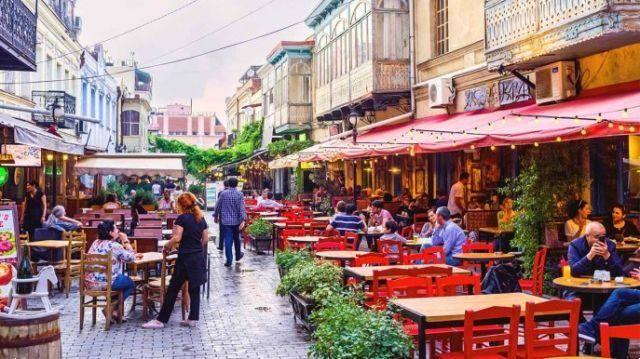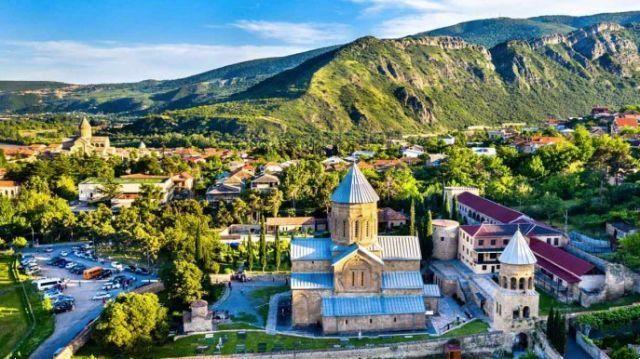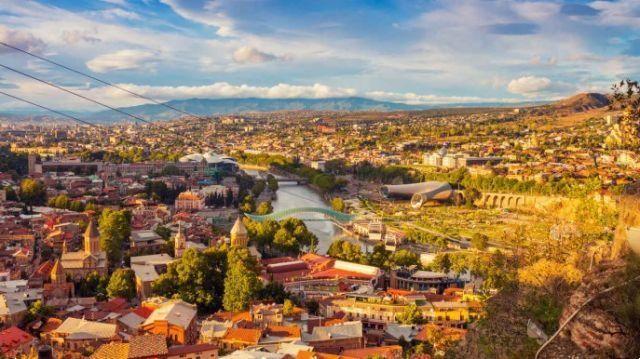
Source: ©efesenko84/123RF.COM
La Georgian gastronomy it is probably one of the least unknown in the world, but also one of the most variegated, thanks to the influences of Greek and Mediterranean flavors, as well as Turkish and Persian. In this mountainous country, eternally poised between Europe and Russia, dinner guests are extolled as “gifts from God” and traditional feasts called supras are held on biblical proportions, sometimes lasting for days on end.
The capital, Tbilisi, is an authentic mecca of millenary flavors and traditions, the result of the rich interaction between Mediterranean and Middle Eastern tastes. It's difficult to find recipes that so skillfully mix them Eastern and Western techniques: Plates of soup dumplings, called khinkali, are as much of an attraction in Tbilisi as they are in Shanghai, while Georgia's soft flatbreads parallel the best Indian naan, puffed and charred on the inside walls of traditional toned clay ovens.
Despite these outside influences, Georgian food remains steadfastly true to itself. Warm, rich dishes like khachapuri (cheese-filled bread) find balance with matsoni (yogurt), used to give a touch of freshness to many recipes. Herbs such as tarragon, flat parsley, dill and coriander combine with walnuts and garlic for rich fillings and sauces.
Variations aside, there are some dishes you should definitely try before leaving Tbilisi.
khinkali
They say that a good khinkali, or Georgian dumpling, can be judged by how many folds ha: according to tradition, if there are at least 20 it is a product made to perfection. But, when a plate of khinkali arrives at the table, counting the folds is never anyone's first priority. Also because eating khinkali requires a rigorous technique: since it is finger food, it must be grabbed with the fingers directly from the closing tuft and bitten by tilting the head to prevent the broth from splashing away. THE stuffed they can be meat-based or vegetarian. In the mountains, this much-vaunted dish is made with lamb, which is present in abundance, elsewhere a mixture of minced beef and pork is used. The origins of Khinkali cannot be traced precisely; some accounts point to Tatar influence, others claim that khinkali is an indigenous product of Georgia's primordial mountain culture. You can taste it i migliori Khinkali in Mtskheta, the “holy city” of Georgia.
khachapuri
No Georgian meal would be complete without Khachapuri, the cheese bread for excellence. Its shape, as well as consistency, varies from region to region: it can take on a thin or thick crust, it can contain one or more layers, it can have round, triangular or rectangular shapes of all sizes and even be made in the shape of a boat with a raw egg in the middle, as in the case of Khachapuri from Adjara, the coastal region of Georgia on the Black Sea. Sometimes, it can also be enriched by pieces of butter placed on top of the raw egg.
Something
Uno meat cooked on a spit, whether veal, lamb or pork is the symbol of the true Georgian feast. While the choice of meat varies from region to region and even according to the seasons, the grilling method is more or less the same everywhere. The overaged vine is considered the noblest choice in wood burning. Once grilled, the meat cubes are removed from the skewers and shaken into a pot of onions slice thinly and pomegranate juice. The sizzling meat lightly caramelizes the onions, while the pomegranate juice forms a sweet-and-tart sauce with the meat's juices.
Kharcho
Kharcho is Georgian comfort food at its best, and it has become so popular, even beyond borders, that it has become part of Russian gastronomy. Amber in color and scented with garlic, this is one meat stew (chicken or beef) coarsely chopped slow cooked with tomatoes, sauce enriched with walnuts and enlivened with bits of tklapi acid. Its distinctive aromatic characteristic is largely due to the use of Khmeli Suneli, a blend of dried spices and herbs that brings with it the warm, spicy notes of Indian curries but also the freshness and delicacy of European herb blends.
Pkhali
In a country where meat was historically reserved for special occasions, it's no wonder that i vegetarian dishes elaborate dishes continue to be at the center of the Georgian culinary canon. Pkhali, a type of salad that could best be described as vegetable pâté, they are made with whatever vegetables you have on hand (beets, carrots, and spinach are common) and served on bread. The preparation is quite simple: just boil the chosen vegetable, blend and squeeze a little lemon juice, chopped garlic and a handful of coriander and ground walnuts. Georgian cooks often prepare several types of pkhali, placing them next to each other and sprinkling the tops with pomegranate seeds.







